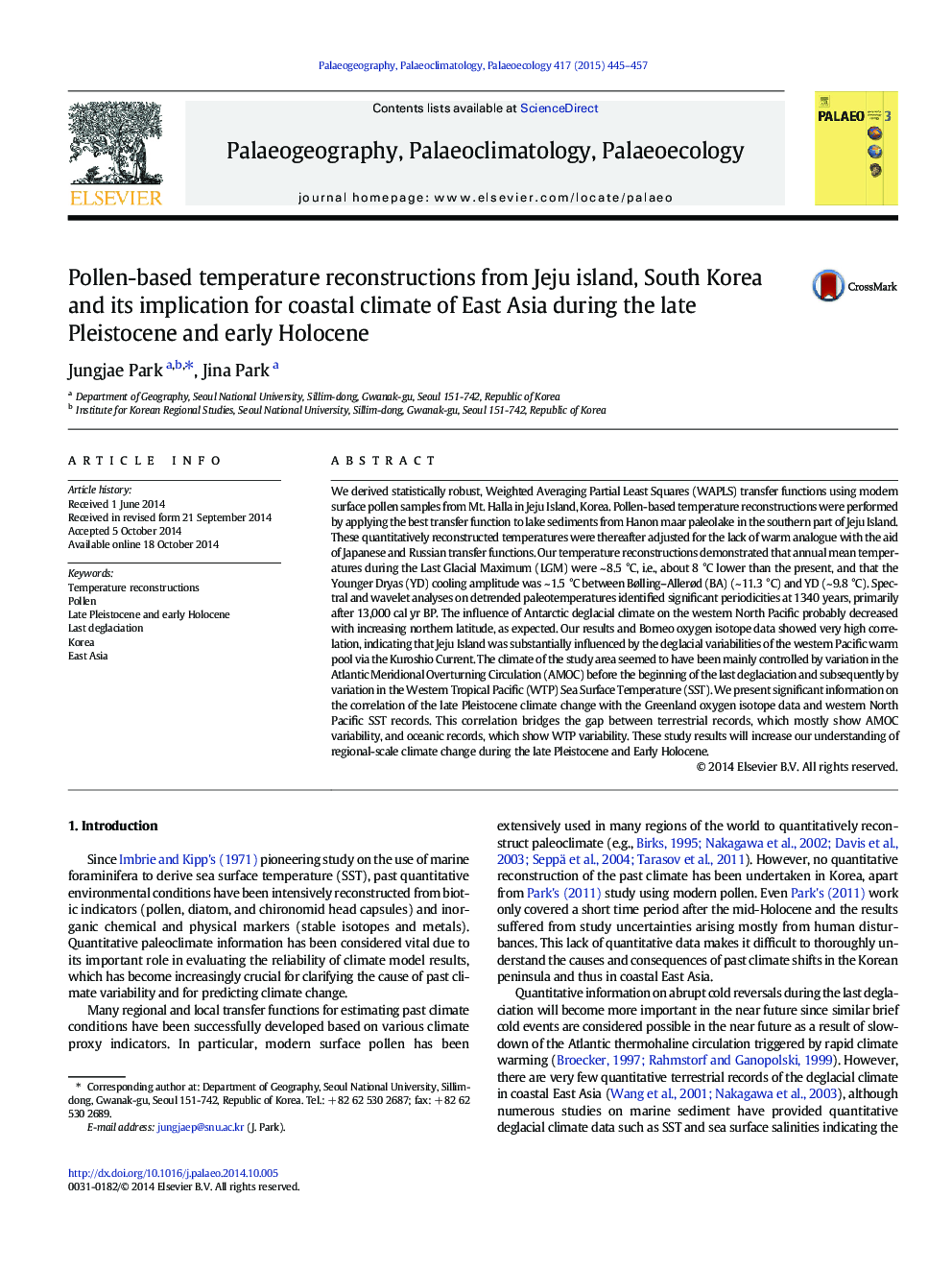| Article ID | Journal | Published Year | Pages | File Type |
|---|---|---|---|---|
| 6349899 | Palaeogeography, Palaeoclimatology, Palaeoecology | 2015 | 13 Pages |
Abstract
We derived statistically robust, Weighted Averaging Partial Least Squares (WAPLS) transfer functions using modern surface pollen samples from Mt. Halla in Jeju Island, Korea. Pollen-based temperature reconstructions were performed by applying the best transfer function to lake sediments from Hanon maar paleolake in the southern part of Jeju Island. These quantitatively reconstructed temperatures were thereafter adjusted for the lack of warm analogue with the aid of Japanese and Russian transfer functions. Our temperature reconstructions demonstrated that annual mean temperatures during the Last Glacial Maximum (LGM) were ~ 8.5 °C, i.e., about 8 °C lower than the present, and that the Younger Dryas (YD) cooling amplitude was ~ 1.5 °C between Bølling-Allerød (BA) (~ 11.3 °C) and YD (~ 9.8 °C). Spectral and wavelet analyses on detrended paleotemperatures identified significant periodicities at 1340 years, primarily after 13,000 cal yr BP. The influence of Antarctic deglacial climate on the western North Pacific probably decreased with increasing northern latitude, as expected. Our results and Borneo oxygen isotope data showed very high correlation, indicating that Jeju Island was substantially influenced by the deglacial variabilities of the western Pacific warm pool via the Kuroshio Current. The climate of the study area seemed to have been mainly controlled by variation in the Atlantic Meridional Overturning Circulation (AMOC) before the beginning of the last deglaciation and subsequently by variation in the Western Tropical Pacific (WTP) Sea Surface Temperature (SST). We present significant information on the correlation of the late Pleistocene climate change with the Greenland oxygen isotope data and western North Pacific SST records. This correlation bridges the gap between terrestrial records, which mostly show AMOC variability, and oceanic records, which show WTP variability. These study results will increase our understanding of regional-scale climate change during the late Pleistocene and Early Holocene.
Related Topics
Physical Sciences and Engineering
Earth and Planetary Sciences
Earth-Surface Processes
Authors
Jungjae Park, Jina Park,
